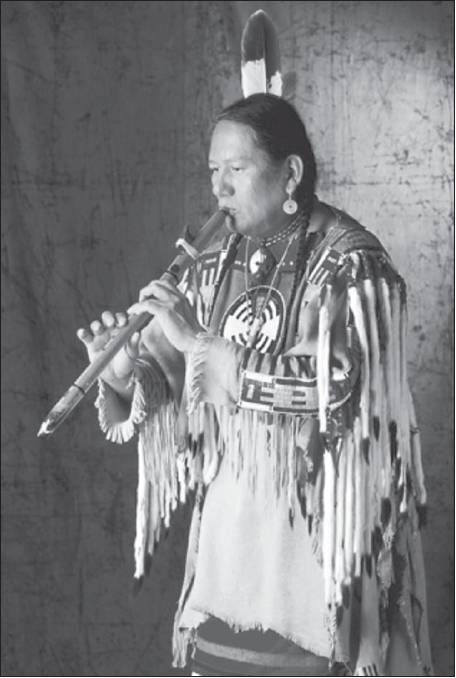Published Sunday, June 9, 2013
This year’s Festival of American Music, June 26-29 at the Shaker Meeting House at Sabbathday Lake, will feature as its opening concert “The Synergy of Native American Legend and Chamber Music.”
Mic-Mac storyteller David Lonebear Sanipass, and the Portland String Quartet will present an evening of Native American legends and examples of that influence and inspiration in chamber music.
“Two Sketches Based on Indian Themes” by Charles Griffes, and Antonin Dvorak’s “American String Quartet, Op. 96” will demonstrate the connections between Native American tradition and classical music.
Looking into the subject a little further, I found a surprising number of classical compositions influenced by Native American tradition. There is Dvorak’s “New World” Symphony, of course, and a ferocious piano sonata by Griffes, but by far the most popular during the Victorian period was the “Hiawatha” cantata of Samuel Coleridge Taylor, a British composer of African descent who has been popularized recently by the Longfellow Chorus.
Compositions by classical composers rely primarily upon popular concepts of the Native American style – a pentatonic scale and marked rhythms with the accent upon the first beat of the bar. Much of the actual music has been lost, remains secret because of its sacred significance, and varies widely between tribes, although First Nation regions comprise broadly similar styles.
Dvorak’s inspiration seems to have been filtered through the medium of the minstrel show, which melded African and Native American themes. (Someone should write a doctoral theses in ethnomusicology about this.)
Other composers who tried their hand at memorializing the “noble savage” (Rousseau) under the influence of Dvorak were Edward Mac-Dowell, Amy Beach, Louis Moreau Gottshalk and Arthur Farwell (1872-1952).
Of his “Pawnee Horses” for solo piano. transcribed for chorus, Farwell said that it was rhythmically so complex that it could not be performed by “any known singer except an Indian.” It is based on an authentic Omaha song. Pianist John Kirkpatrick, who championed his work, referred to Farwell as “an American Bartok,” one of the few who went directly to the source.
There seems today to be a renaissance of interest in Native American music and its fusion with classical and other Western forms, spearheaded by traditional cedar-wood flute player R. Carlos Nakai.
Nakai, who is Dine, released his first album, “Changes” on Canyon Records in 1983. His second album “Cycles” was used by choreographer Martha Graham for her “Night Chant.”
He has commissioned a number of composers to write music for the Native American flute, and his widely-known recordings inspired Phillip Glass to include the flute in his Piano Concerto No. 2, “After Lewis and Clark.”
Serendipity note: In my column on “primitive” instruments I mentioned a double-barreled flute that could play chords. Apparently there is also a double Native American flute which plays a drone against which the melody is sounded.
Christopher Hyde is a writer and musician who lives in Pownal. He can be reached at: classbeat@netscape.net
Send questions/comments to the editors.



Success. Please wait for the page to reload. If the page does not reload within 5 seconds, please refresh the page.
Enter your email and password to access comments.
Hi, to comment on stories you must . This profile is in addition to your subscription and website login.
Already have a commenting profile? .
Invalid username/password.
Please check your email to confirm and complete your registration.
Only subscribers are eligible to post comments. Please subscribe or login first for digital access. Here’s why.
Use the form below to reset your password. When you've submitted your account email, we will send an email with a reset code.